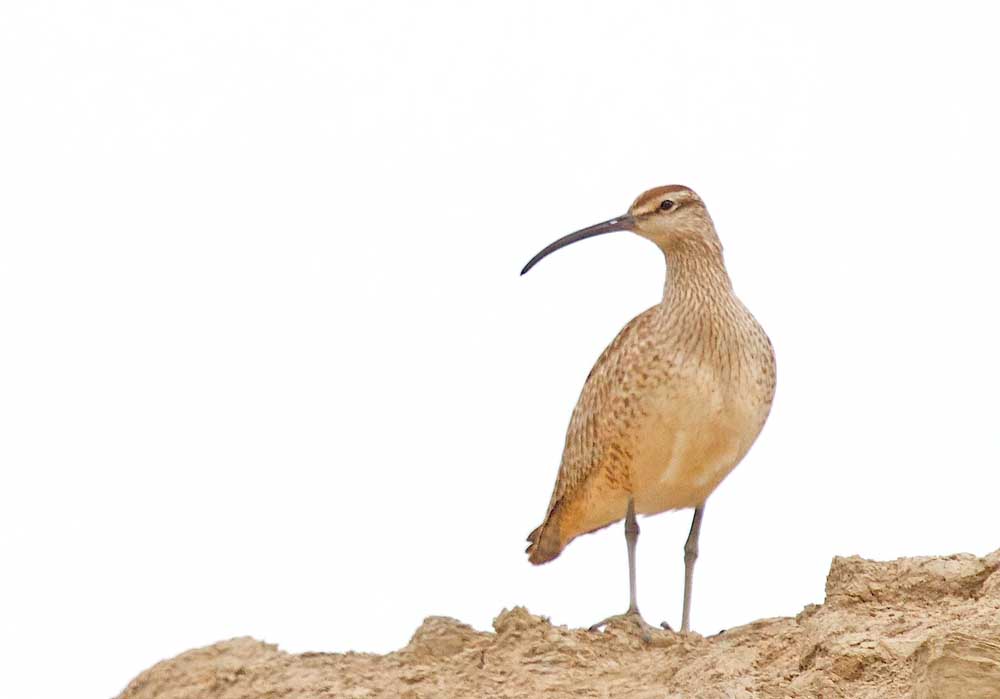Birding: Last of the ”big boys’: Marbled godwit and the whimbrel
Published 1:14 pm Thursday, June 3, 2021

- The whimbrel is mainly brownish overall. It sports bold head stripes and is finely streaked on the breast, neck, and face. Its bill is long and decurved and often shows some pink coloring at the base.
To date we have looked at three of the “big boys” the long-billed curlew, black oystercatcher, and the willet. Each is distinctive and can be seen on the Long Beach Peninsula. Two other members of the “big boys” are the marbled godwit and the whimbrel. Each of these species is about the size of a sub plus a half (about 18 inches), and each is also distinctive in its own right. Both the marbled godwit and the whimbrel can be seen in each season of the year on the peninsula. Both are uncommon in all seasons except summer when they are only seen occasionally.
Trending
The distinctive characteristics of the marbled godwit make excellent ID markers. It is a large bird with a long gently upturned bi-colored bill that is pinkish orange from the base ending with a dark tip. The godwit’s major color above and below is cinnamon. Its wingtips are dark and there is some dark black mottling on the back, some black barring underneath, and it has long gray legs.
The marbled godwit is most common in spring and fall when it is on migration. In addition to its preference for intertidal mudflats it may also be seen wading and foraging in deeper water. When foraging it may totally submerge its head as it probes for crustaceans and small fish. Another favorite dish on the marbled godwit’s menu is insects especially grasshoppers.
The marbled godwit is a migrant along the coast where it stops to rest and feed in our coastal estuaries, on ocean beaches, shallow wetlands, saltmarshes, and mudflats. It is a familiar sight on its coastal wintering areas. I have been lucky enough to see it on the Peninsula and nearby environs in every season of the year. One of my best places to see this species is the mudflats adjacent to the Ilwaco harbor. Willapa bay, Tokeland and our ocean beaches are the other of my best birding places for seeing the marbled godwit.
Trending
The whimbrel, like the marbled godwit, is also a very large bird. It gives the appearance of having a heavy looking body. It is mainly brownish overall. It sports bold head stripes and is finely streaked on the breast, neck, and face. Its bill is long and decurved and often shows some pink coloring at the base. These features make the whimbrel both conspicuous and distinctive. The whimbrel’s long downturned bill shape is well suited for probing into the burrows of fiddler crabs which, according to scientists, just happens to be one of its favorite dishes. However, they also enjoy worms, mollusks, small fish, berries and insects. They have an interesting behavior of washing crabs in water to clean the mud off them before swallowing it whole (Bird, 2019). If you make time to sit and observe foraging whimbrels, you might see a bird or two in action.
One fine day I was birding at the jetty when suddenly three very large shorebirds flew in and slowly put down on Benson Beach, and as they folded their long-pointed wings a head with bold stripes and a long downward curved bill came into view. I knew immediately that this small band of shorebirds were whimbrel. They were both loafing and foraging on the beach’s hard, sandy flats. I watched in silence as they marched ever so slowly down the beach. Such a beautiful sight!
The marbled godwit is the largest godwit in North America. Its large size and cinnamon color make this godwit a very distinctive shorebird. As for the whimbrel, its bold head pattern and long downward curved bill make it distinctive! This rounds out the stories of the “big boys.” This is a good time to be on the lookout for all five of them. Happy birding!









